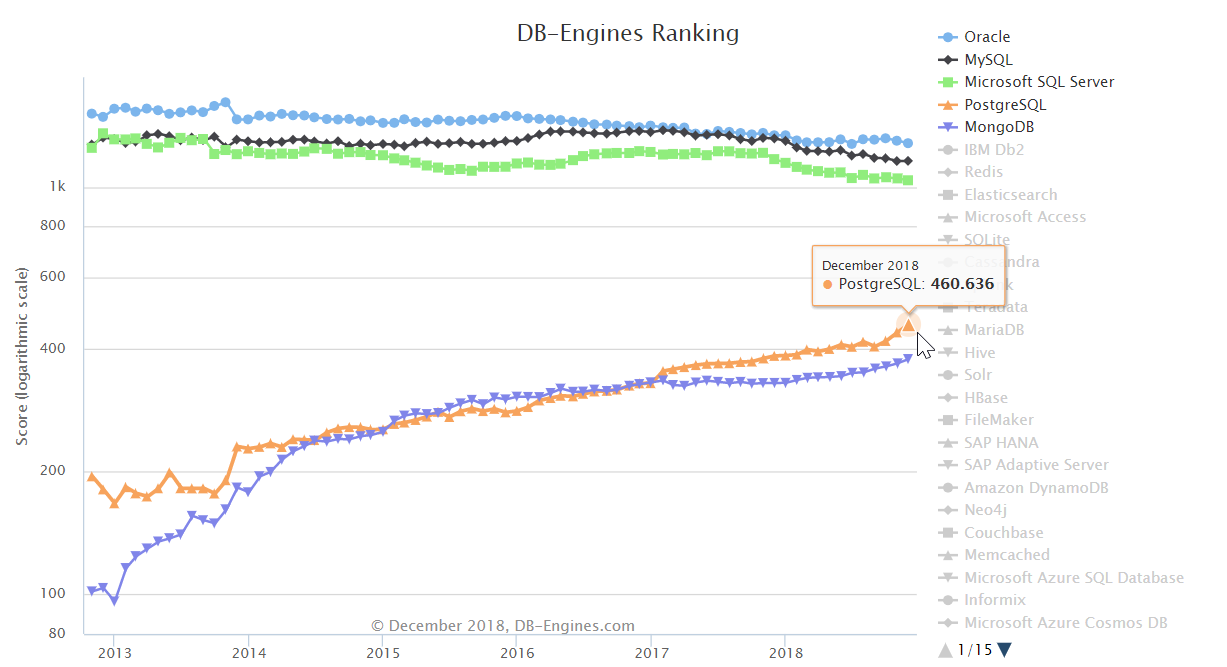PgOSM: Transform OpenStreetMap data in PostGIS
My previous post, Load OpenStreetMap data to PostGIS,
covered how to use osm2pgsql to load a sub-region export of OpenStreetMap data into PostGIS (PostgreSQL).
With the data loaded to Postgres, one quickly finds out that it isn't very easy to jump in and use right away.
To help solve this problem,
the PgOSM project was created.
The main purpose of PgOSM is to restructure the OpenStreetMap data into a more friendly format
for relational databases.
This post starts by showing how the PgOSM project is used to transform our OpenStreetMap data and ends with showing why we do it this way.
Load OpenStreetMap data to PostGIS
PostGIS rocks, and OpenStreetMap is Maptastic! One challenge I've had with this open source pair, though, has been getting a good, comprehensive set of OSM data into Postgres, on non-enterprise hardware. A few years ago I found Geofabrik's download server... a lifesaver! They offer logical regional exports of OpenStreetMap data, updated daily, distributed by a number of regional levels. The one I use the most is the U.S. state-level files, namely Colorado.
Once I had found this stellar data set (updated daily!) I wanted a way to easily get my own spatial database
regularly updated with Colorado. One of the commonly mentioned tools is
osm2pgsql.
The problem is, I was (and still am) trying to run processes on the smallest hardware possible and this
process is not exactly lightweight!
PostgreSQL + PostGIS + OpenStreetMap = 100% Open Source, GIS-filled database!
PostgreSQL at RustProof Labs: 2018 in Review
As I look back on 2018, I can say with great joy: I have spent a lot of time working with PostgreSQL this year! Postgres is my favorite open-source database, and I'm really excited to start digging into some of the new features and enhancements in PostgreSQL 11 and PostGIS 2.5.
This post is a quick snapshot of my Postgres activities in 2018 and some goals for 2019. For me, these activities fall into a three broad groups.
- Blog posts
- Projects built around PostgreSQL (open-source and internal)
- Other stuff
PostgreSQL popularity
PostgreSQL has continued to grow in popularity through 2018, a long running trend according to DB-Engine's ranking. Postgres is 4th on the list ahead of MongoDB (even before the news of The Guardian switching!) and behind Oracle, MySQL and MS SQL. Postgres and MongoDB are growing in popularity while all of the top 3 databases are apparently declining.

Yay, PostgreSQL!!
PostGIS: Tame your spatial data (Part 2)
In a previous post PostGIS: Tame your spatial data
I illustrated how large-area polygons in your spatial data can take up a lot of space.
That post examined one method (ST_Simplify) to reduce the size of the data (45% reduction of size on disk)
in order to improve performance (37% faster queries).
The goal of reductions like this are to improve the life of the analysts
working with spatial data for their job.
These analysts are often using spatial data within a GIS tool such as QGIS, and in
those tools Time-to-Render (TTR) is quite important.
The topic of that prior post solved a specific problem (large polygons), and unfortunately that solution can't be applied to all problems related to the size of spatial data.
This post is an advanced topic of the series PostgreSQL: From Idea to Database.
Enhance your PostgreSQL Data Dictionary
This post continues the topic of creating a robust data dictionary in PostgreSQL.
My previous post on
building a data dictionary in PostgreSQL
focused on using built-in psql tools, such as \dn and \dt. It also quickly covered the use of comments
to document database objects.
Those tools and shortcuts are great and readily available, but beyond quick exploration tasks these built-in options don't provide enough functionality. This is especially true in today's data-filled world with
increasing regulation.
This post is part of the series PostgreSQL: From Idea to Database.
Meet pgdd: PostgreSQL data dictionary
The PostgreSQL Data Dictionary (pgdd) project,
available on GitHub, intends to improve our ability to document databases in PostgreSQL.
This open-source project super-powers your PostgreSQL databases by introducing additional
meta-tracking abilities.
It also makes the internal database meta-data more user accessible and user friendly through a
handy set of views. These views can be queried and joined using standard SQL syntax using any
tool you like.
pgddexists to make PostgreSQL data dictionaries more usable.
Data dictionary should be for everyone
Imagine an analyst with access to a PostgreSQL/PostGIS database. That database probably has
data from a variety of open and closed sources.
That analyst spends
quite a bit of time in QGIS, but very little time in psql. Being able to run
standard SQL type queries in their favorite tool makes the data dictionary more usable for this user.

